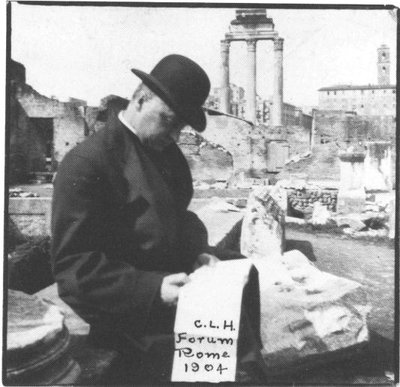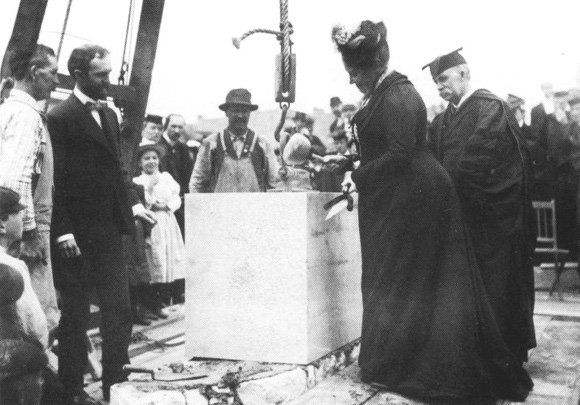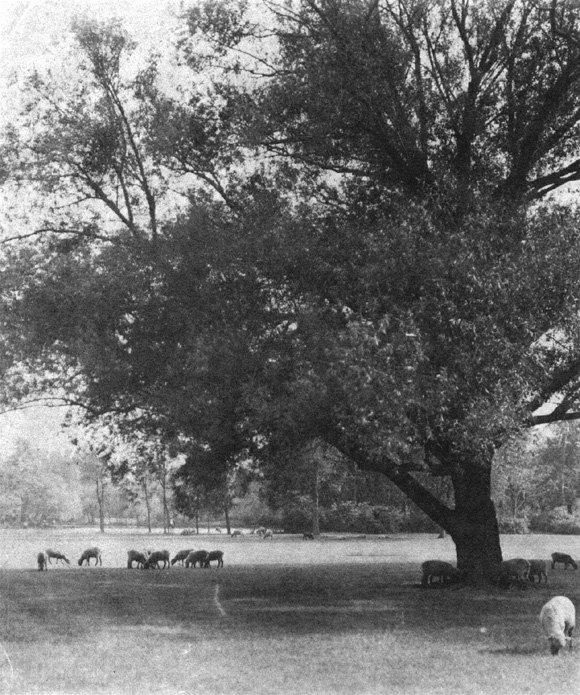Finance and Commerce

Hutchinson traveled frequently to Europe to study and collect art. Along with his friend Martin A. Ryerson he helped choose English Gothic as the architectural style for the University quadrangles.
Trusted businessmen played key roles in gaining wide acceptance of the new University. Charles Hutchinson, president of the Corn Exchange Bank, which handled much of the business of the Board of Trade, was one of the first to give his approval to the fundraising campaign of the American Baptist Education Society. In later years, Norman Wait Harris (founder of Harris Trust & Savings Bank) and John Nuveen also lent their support.
Annie McClure Hitchcock, whose family came to Chicago in 1837, provided funds for a men's dormitory at the University in honor of her husband Charles, a founder of the Chicago Bar Association. John P. Wilson, another prominent Chicago attorney, helped guide the University as a trustee in its early years. The Chicago legal community provided two chairmen for the Board of Trustees, Laird Bell (1949-53) and Glen A. Lloyd (1956-63).
Gifts came to the University from many types of donors, including the widow of "Diamond Jo" Reynolds, who ran steamboats on the Mississippi River and gold mines in Arizona; Charles T. Yerkes, who created a furor by monopolizing the Chicago street railways; and Helen Culver, perhaps Chicago's first businesswoman, who managed her cousin's extensive real estate holdings and eventually turned many of them over to philanthropic interests, including Hull House (which occupied her family estate), and the University 's biological laboratories.
Eli B. Williams came to Chicago in 1833, built a store on South Water Street, and made his fortune from investments in real estate and public utilities. In 1916 his son, Hobart W. Williams, distributed the family properties to St. Luke's Hospital, the Chicago YMCA, and the University of Chicago. The University received the old Williams homestead on Wabash and Monroe, which by then was a valuable commercial block. Sale of the property provided funds to expand the business school.
Jonathan Young Scammon arrived in Chicago in 1835. A lawyer and banker, he wrote the original ordinances to set up the public schools, helped found the Chicago Historical Society and Chicago Academy of Sciences, donated ground for the Hahnemann homeopathic hospital, and funded an astronomical observatory at the Old University of Chicago campus. Financially ruined by the Chicago fires in 1871 and 1874, he retired to his wife's twenty-acre estate in Hyde Park. Through bequest and purchase, the Scammon property became the site of the Laboratory Schools of the University of Chicago.
Family names such as Searle, Crown, Pritzker, Wyler, Regenstein, Kersten, Mitchell, Pick, and Rubloff represent the wide variety of business interests in the Chicago area which have provided strong support for the University in recent years. A private institution often associated more closely with a national or international community of scholars than with its closer neighbors, the University of Chicago nonetheless relies as it always has on continuing relationships with the citizens, businesses, and institutions of the city to move its work forward.


